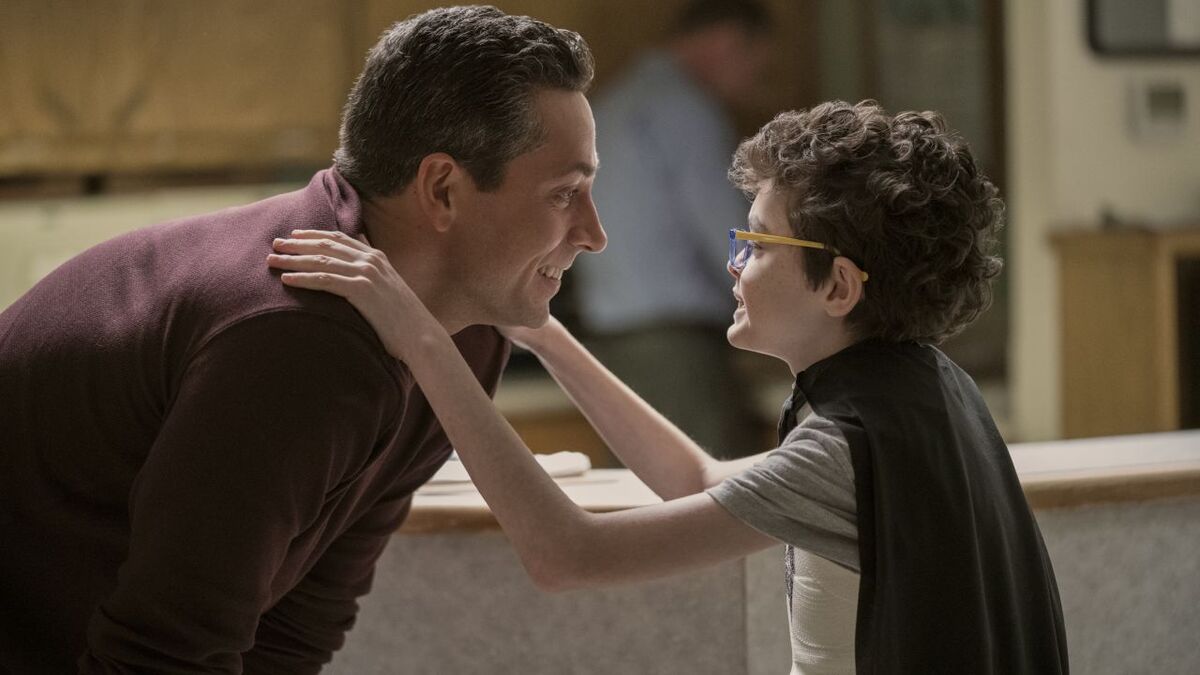
Where True Detective is building something new on something old is with its broadened scope, and shift in focus. The ignored crimes of the impoverished haunted Louisiana, but it’s the hidden crimes of the elite, not the UV or smog, that’s the number one carcinogen in California. When Rust and Marty finally got their man, they had only just scratched the surface of a much greater evil. Rather than approaching another world of corruption from the edges, Pizzolatto ambitiously works from the inside out. The hand of greed has touched just about everyone and thing under the California sun, so knowing who’s got who in their pocket matters quite a bit. Season 2 makes for a much slower, more involved viewing experience, as just sorting out the network of kickbacks and double-dealing proves taxing even before a disfigured stiff enters the picture.
The increased complexity makes the first few hours anything but effortless, and in both performance and characterization, the diffuse cast of Season 2 is less easy to warm to than Season 1’s odd couple pairing. Used to be that ten minutes wouldn’t go by without Rust offering another Tumblr-worthy maxim about existence, and death, and how people aren’t very nice. Catchy Pizzolatto-isms are still here, in their way, but just more spread out now that McConaughey isn’t around to act as a single, dulcet mouthpiece. Velcoro is a font for beleaguered tough guy observations, though he can smell his own B.S. better than Rust ever could. “I used to want to be an astronaut…but astronauts don’t even go to the moon anymore,” he tells his meek son, the possible product of a sexual assault.
The world of True Detective is bleak as ever, and hasn’t lost its penchant for macho posturing against the dying of the light; in the premiere, Velcoro throws back endless whiskey, and uses brass knuckles to teach a valuable lesson on the dangers of bullying. Many other series hallmarks carry over just the same. Show-stopping conclusions are baked into every episode so that the last scene will linger with you until next week (the final shot of the premiere is indeed a doozy). Transitionary music and helicopter shots maintain the sense of unease from scene to scene, just with more freeways and jazz now. Production designer Alex DiGerlando jam-packs each location with telling and distinctive detail. The green screen during in-car scenes is distracting as ever.
Whether it suggests Pizzolatto took criticisms of the first season to heart, or that he’s an even more flexible writer than he initially let on, Season 2 shows signs of True Detective maturing as a television series. There’s tact to the systemic evil on display here that mutilated hookers and children are rarely afforded. A police raid of a house employing streaming webcam girls is handled with minimal voyeurism. Gruesome violence is often presented matter-of-factly, so that we can move on to finding out who is responsible.
Not only do we now have female characters who aren’t just sex workers or harpy wives, we also have a terrific performance out of McAdams that’s all bruiser, no bull. For better or worse, her addition can be read as a silver bullet designed to put down True Detective’s rap for female characters written as victims or incompetents. Bezzerides is, in many ways, a hammer of a character, striking but singular in function. Her home is cluttered by bushido literature, and features a wall of knives that would make Crocodile Dundee blanch. Her wardrobe includes hidden blades and enough rings to make a set of silver knuckles all her own. She even smokes an e-cigarette, an affect other characters latch onto as a sign of weakness. She lets them have it.
But True Detective has always featured gaudily one-note characters – it was the actors and shading around the edges that would bring humanity to Pizzolatto’s florid writing. You’re never quite sure what accent Farrell is trying for, but as a self-loathing scumbag, he’s entirely convincing. The barely hidden anger of a comedian makes Vaughn the right choice for Semyon in smaller scenes, even if a big monologue at the start of episode two pushes past his ability to handle Pizzolatto at his most indulgent. And Kitsch, covered in scar tissue from the hobbled start to his film career, is back doing what he does best, bringing pain and flashes of wit to a quiet giant.
Season 2’s moments of true virtuosity will likely prove divisive, with dips into surrealism that are more arthouse than ever (expect to hear the word “Lynchian” thrown about). Some will see these scenes as “Exhibit A” proof that the show has devolved into a parody of itself. “We get the world we deserve,” the season’s tagline, suggests maybe Pizzolatto knew he would pay in Season 2 for the pretensions of significance held by Season 1. Many TV shows eventually change for the worse or better, but like most people, True Detective is easing into a more honest version of itself. In the second hour, Velcoro’s ex-wife (Abigail Spencer) tells him that their marriage ended once he stopped being “good at being decent.” Your relationship with True Detective may similarly hinge on accepting a version of the show that’s just decent at being good, and okay with that fact.










Published: Jun 14, 2015 10:47 pm